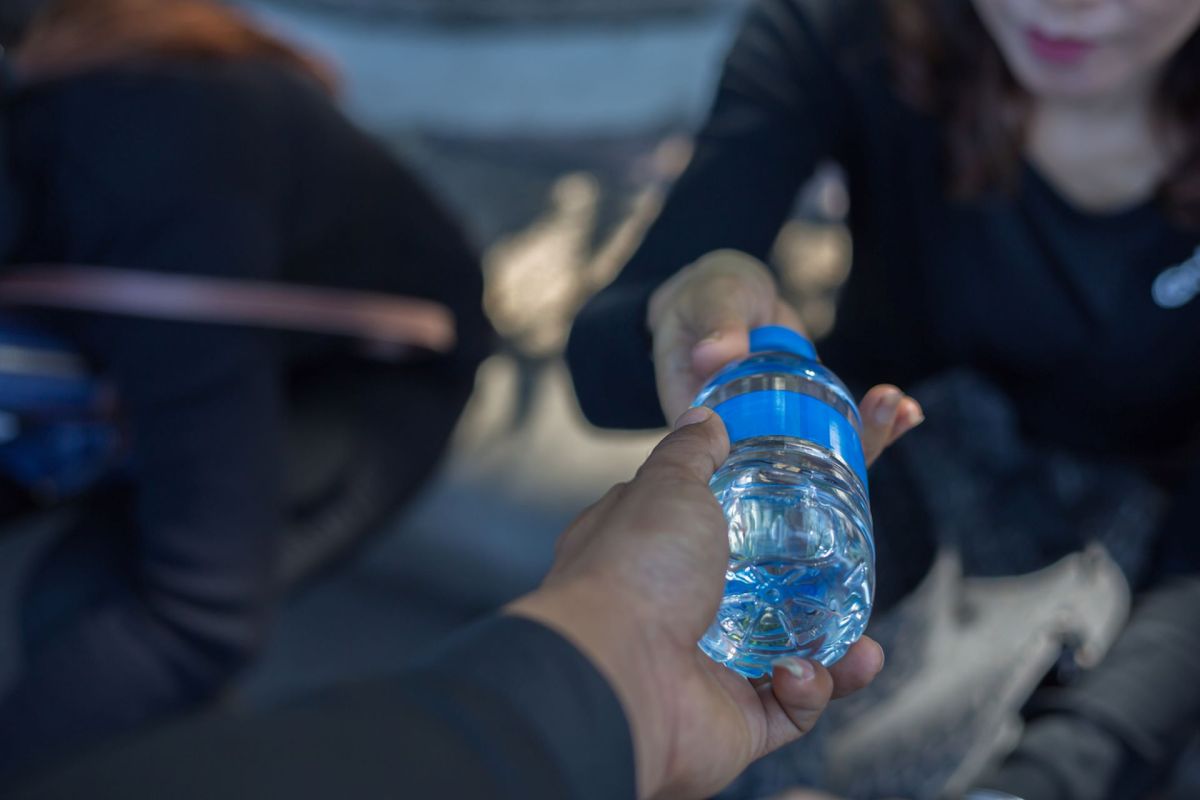You're probably familiar with microplastics — small, plastic particles in our water, food, and even our bodies. Nanoplastics are even smaller, but they're a big problem.
What's happened?
Nanoplastics were generally considered too small to detect individually, and nano-mass in a sample could only be estimated.
But using new laser technology, researchers at Columbia and Rutgers were able to shine "two lasers, calibrated to recognize the chemical bonds binding the nanoplastic particles, onto the membrane. Then… count[ed] all the different particles of plastic." They started by filtering three separate brands of bottled water through an "ultrafine membrane."
Their research, summarized in a post by Grist, revealed that plastic water bottles have "nearly a quarter of a million of [nanoplastics] per liter, about 10 to 100 times more than previously published estimates."
One of the researchers from Columbia, Wei Min, spoke to Grist about this new efficient way to identify nanoplastics and the ability to explore their effects on humans and the environment, noting: "We've opened up a whole new world."
Why is this important?
Microplastics are pieces of plastic less than 5 millimeters in size. Nanoplastics are smaller, measuring less than one micrometer — 1/1000th of a millimeter. For comparison, an average human hair is 70 micrometers in diameter.
These plastic particles enter our water, food, makeup, and more.
Once ingested or inhaled, nanoplastics are small enough to invade cells, damage DNA, and negatively affect our immune systems, hearts, brains, and reproductive systems.
What can I do?
On an individual level, to reduce exposure to micro- and nanoplastics, skip plastic water bottles, avoid purchasing harmful plastic types, and support policies that will reduce our reliance on plastic.
Meanwhile, researchers are developing new ways to prevent microplastics and nanoplastics from entering our environment in the first place, from production to the recycling process.
Many are working on biodegradable plastics — materials that will "completely degrade into carbon, oxygen and other elements." Improvements are being made to "end of pipe capture" methods, such as wastewater and stormwater runoffs, to stop plastic particles from entering waterways. Even specific bugs can digest polyethylene, the most common type of plastic.
Despite the news about nanoplastics, there's still hope. By making conscious choices and supporting plastic-reducing policies and legislation, we can contribute to a cleaner future.
Join our free newsletter for weekly updates on the coolest innovations improving our lives and saving our planet.









